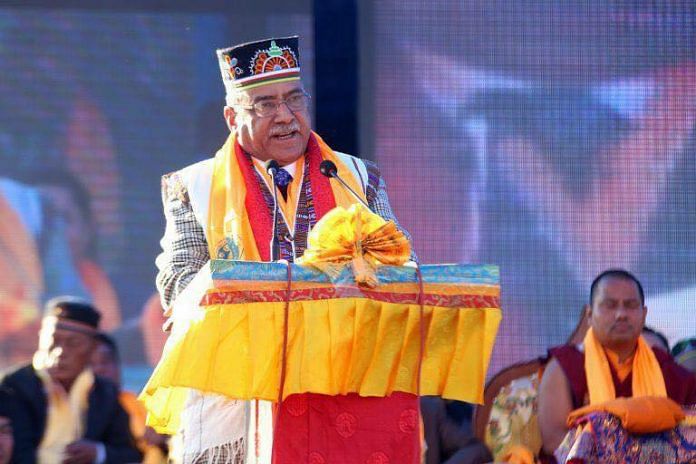New Delhi: The political twists and turns continue in Nepal with Prime Minister Pushpa Kamal Dahal, known as Prachanda, deciding to support an opposition-backed presidential candidate last week, instead of the nominee of alliance partner Communist Party of Nepal (Unified Marxist-Leninst).
Prachanda has pledged support to Ram Chandra Paudel of the Nepali Congress, instead of Subash Nembang.
This declaration has put the ruling coalition in flux with the deputy prime minister and three other ministers resigning consequently.
Prachanda, a former communist guerilla, has been in power since December 2022. His Communist Party of Nepal (Maoist Centre) won 32 seats in the 275-member house, and holds power as part of a coalition that had seven parties before the current controversy erupted.
Deputy PM Rajendra Lingden resigned Saturday.
On 27 February, the Communist Party of Nepal (Unified Marxist-Leninst) — chaired by former PM K.P. Sharma Oli — quit the government. This was the third party to leave the ruling coalition after the Rastriya Prajatantra Party (RPP) and the Rastriya Swatantra Party (RSP).
The fresh crisis will likely lead to a vote of confidence in Parliament, which Prachanda is expected to survive with the support of the Nepali Congress.
Manjeev Puri, India’s former ambassador to Nepal, said the country “is a place where politics of make and break is very normal”.
Essentially, this is a result of a hung parliament and fragile alliances in the country, he added.
Sudden changes and breakdown of ruling alliances are nothing new in Nepal’s politics. Eleven governments have seen power since the abolition of monarchy in the country in 2008.
Also Read: ‘Shape up, or ship out’—why Nepal’s young politicians are challenging an ageing establishment
Supporting Paudel
Bishnu Rijal, the deputy chief of the Communist Party of Nepal (Unified Marxist-Leninst), said they left the coalition as PM Prachanda’s decision to support the Nepali Congress candidate for president was a violation of their coalition agreement dated 25 December 2022.
“A high-level meeting of the party held under the leadership of party chief K.P. Sharma Oli Monday decided to quit the government and withdraw the party’s support to the Prachanda-led government,” Rijal said.
Before the election last year, Prachanda had allied with the Nepali Congress. They were supposed to form the government together, but this did not work out due to differences regarding power-sharing.
“Now, it seems Prachanda was seemingly worried about the president being from Oli’s party. There were apparent anxieties that Oli would control the government and he would become a lame-duck PM,” Ranjit Rae, India’s former Ambassador to Nepal, told ThePrint.
While the role of the Nepali president is seen as largely ceremonial, it can prove important in times of political crises.
PM Prachanda is also reportedly seen as more comfortable working with the Nepali Congress than the Marxist-Leninists.
With the Nepali Congress’ support, analysts assess that Prachanda will easily pass the trust vote and form a new coalition with them and other smaller partners.
The PM will need 138 votes in his favour to continue. He reportedly enjoys the support of 141 lawmakers — including the Nepali Congress — in the 275-member house.
Implications for India
A few weeks prior to the current controversy, India’s foreign secretary Vinay Kwatra had visited Nepal.
The meetings there were described as productive, involving multiple facets of the bilateral relationship. It also marked the first high-level bilateral engagement between the two countries since the communist government came to power in December 2022.
The Chinese have always sought to bring the communist parties together and were naturally pleased with a UML-Maoist coalition. This was not ideal for India, added Rae.
“Now, a possible Nepali Congress government and president supported by them could bode well for India,” said Puri.
(Edited by Sunanda Ranjan)
Also Read: Politics in Nepal has tilted in India’s favour now. 2017 elections was all about China






